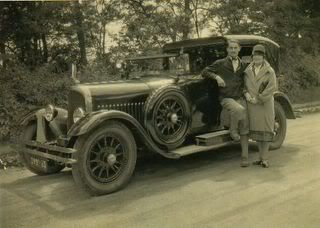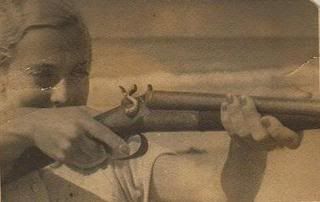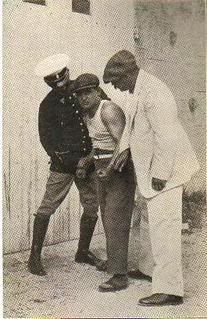Fantasy to Mystery
By Sophie Masson | January 16, 2008 |
 I write mainly for young adults and children, though I’ve also written several adult novels. Most of my books have been fantasy novels, though I’ve also written some realistic fiction. Fantasy is a genre I’ve always felt at ease in—a genre that expresses well the way in which I see the world—and also, it formed a good deal of my own childhood reading. Plus, in practical terms, it’s a genre that’s been good to me. Fantasy is a global genre—no matter whether you live in a little rural settlement in Australia, like I do, or in deepest Manhattan, you have a lot more chance of getting an international audience than in many other genres. That’s an important consideration for an Australian writer, because although we have great readers, our home market is small. Practically all Australian books for young people that have made it into the international market are in the fantasy genre. Partly that’s because fantasy is traditionally the dominant genre in children’s and young adult fiction, of course, but also because fantasy is so portable. (The photo above is of my grandfather Robert-Rene Masson and his grandmother, Madame Chase-Casgrain, 1929)
I write mainly for young adults and children, though I’ve also written several adult novels. Most of my books have been fantasy novels, though I’ve also written some realistic fiction. Fantasy is a genre I’ve always felt at ease in—a genre that expresses well the way in which I see the world—and also, it formed a good deal of my own childhood reading. Plus, in practical terms, it’s a genre that’s been good to me. Fantasy is a global genre—no matter whether you live in a little rural settlement in Australia, like I do, or in deepest Manhattan, you have a lot more chance of getting an international audience than in many other genres. That’s an important consideration for an Australian writer, because although we have great readers, our home market is small. Practically all Australian books for young people that have made it into the international market are in the fantasy genre. Partly that’s because fantasy is traditionally the dominant genre in children’s and young adult fiction, of course, but also because fantasy is so portable. (The photo above is of my grandfather Robert-Rene Masson and his grandmother, Madame Chase-Casgrain, 1929)
But I love trying out new things. I love to challenge myself. And recently I decided I wanted to branch out, and start to explore another beloved genre: mystery/crime. Like fantasy, mystery/crime is one of the world’s most popular genres. And like fantasy, it’s something I have an instinctive feel and love for. I started in primary school reading Enid Blyton’s Secret Seven and Famous Five series, graduated to Nancy Drew and Trixie Belden and the Hardy Boys to Agatha Christie, and on and on. Today I still read very widely indeed in the genre, as well as being an addict of (mostly British) TV crime series.
 I knew I wanted to write something set in the late 1920’s or early 1930’s, because in part I was inspired by rereading the gorgeous books of Agatha Christie, but also because of a series of photographs I own, featuring my glamorous grandparents at about that time (My grandmother Marie-Louise Masson, posing with a gun. Photo credit: my grandfather).
I knew I wanted to write something set in the late 1920’s or early 1930’s, because in part I was inspired by rereading the gorgeous books of Agatha Christie, but also because of a series of photographs I own, featuring my glamorous grandparents at about that time (My grandmother Marie-Louise Masson, posing with a gun. Photo credit: my grandfather).
I wanted to write something classy, sparkling and suspenseful like Christie, something that kids would love but that adults could read with pleasure too. But I couldn’t quite find the focus. And then, idling on the Internet one day, looking up stuff about Sherlock Holmes, I discovered Harry Ashton-Wolfe, celebrity detective of the early twentieth century, who wrote a number of true-crime books. Marvellously boastful, featuring Ashton-Wolfe at the centre of any number of blood-curdling cases, the books (which I bought) are also real name-droppers: Ashton-Wolfe claimed to have known master detectives ranging from the top guys at the French Surete (French detectives were held up then as the model of scientific detection) and Scotland Yard, but also Arthur Conan Doyle himself. Not to speak of well-known criminals, ranging from violent anarchists to the Eurasian criminal who became the model for Fu Manchu!
As I read his books, characters began to spring fully-formed into my head: Philip Woodley-Foxe, a celebrity detective who is rather better in his own imagination than he really is; his clever teenage assistant, George Dale, who hero-worships him; Mrs Peabody, a bumptious, rich jeweller’s widow, who puts an ad in a local English paper for a young secretary; that same secretary, a bright young girl called Daisy Miller. Add to that a film star, Olivia Marlowe, dripping with diamonds, and trailing a doomed love affair with a member of European royalty; a daring jewel thief who calls himself the Shadow, and Victor St-Remy, a glamorous young Frenchman with his equally classy grandmother: and hey presto, there was The Case of the Diamond Shadow, taking shape in my mind!
 On the surface, fantasy may seem a long way from crime, but in fact the two genres are very close indeed, and share many common characteristics: a strong story, clues embedded throughout as to plot or character developments, a good pace, vivid and unusual characters, an interesting setting…And fantasy novels usually revolve around a central quest for truth and justice, a wrong that must be undone, a climactic revelation, and everyone getting their just deserts, just as in mystery. Usually there’s no actual magic (though some, like the Paz novels of Michael Gruber, include strong supernatural/magical elements). However, the detection itself can take the place of that: many fictional detectives are so clever and insightful they seem just like magicians, with almost-supernatural powers (think of Poirot, Sherlock Holmes, Tony Hill, etc). Others are flawed questing knight types, like Raymond Chandler’s Marlowe: those novels were in fact consciously modelled on Arthurian themes. (Photo above: Harry Ashton-Wolfe, the man who inspired my fictional detective, Philip Woodley-Foxe, in a typical shot from one of his ‘true crime books’, supposedly apprehending a criminal!)
On the surface, fantasy may seem a long way from crime, but in fact the two genres are very close indeed, and share many common characteristics: a strong story, clues embedded throughout as to plot or character developments, a good pace, vivid and unusual characters, an interesting setting…And fantasy novels usually revolve around a central quest for truth and justice, a wrong that must be undone, a climactic revelation, and everyone getting their just deserts, just as in mystery. Usually there’s no actual magic (though some, like the Paz novels of Michael Gruber, include strong supernatural/magical elements). However, the detection itself can take the place of that: many fictional detectives are so clever and insightful they seem just like magicians, with almost-supernatural powers (think of Poirot, Sherlock Holmes, Tony Hill, etc). Others are flawed questing knight types, like Raymond Chandler’s Marlowe: those novels were in fact consciously modelled on Arthurian themes. (Photo above: Harry Ashton-Wolfe, the man who inspired my fictional detective, Philip Woodley-Foxe, in a typical shot from one of his ‘true crime books’, supposedly apprehending a criminal!)
I’ve read so many mystery and crime novels over my life that I found that way of writing came instinctively. I knew how to construct the story without even consciously thinking about it. (This is the reason why aspiring writers should read very widely and deeply in their chosen genre). The book flowed really well, the writing came crisp and natural, and I really enjoyed myself.
But because this was my first mystery novel, and because my publishers were used to getting mostly fantasy ideas from me, I didn’t do what I usually do with my other books, which is to sell the book on the basis of an outline and a few chapters. I decided to write the entire ms, so the publishers could really see what they were getting, and to convince them I could do it. So I wrote it, went through it, polished it, added some pictorial elements—including a clue embedded in some comic strips—and put together a really good package for it, with outline, explanation of what I was doing and why, the glamorous photos of my grandparents that had kicked off the whole thing, and sent it to my agent. The rest as they say, is history.
The Case of the Diamond Shadow comes out in July this year in Australia—my publishers are already also presenting the book to publishers overseas. It will be very interesting to see then whether my switch from fantasy to mystery is accepted by readers. I certainly hope it will, because I love working in this vein, and can see myself writing lots more. Not that I’m going to desert fantasy altogether–I enjoy writing it too much—but now I’ve got another string to my bow. It can seem scary, to branch out from a genre where you’ve been successful, into something new and untried—but it’s worth it, every exciting minute of it! I feel refreshed, reinvigorated, and ready to set out on what promises to be a fantastic journey.
I invite you to visit my blog The Case of the Diamond Shadow for more of my inspirations behind my new endeavor.









I think readers are more accepting of writers who branch out into other genres…or at least, publishers are more amenable. Readers accept anything, it seems, as long as they get a good story out of it.
Best of luck, Sophie!
Sophie, what a fascinating journey you’ve had with your story. Thanks so much for sharing it, and best of luck to you in this new branch of your career. (Loved the pictures of your grandparents, and the name of your detective, by the way!)
A fascinating insight into a writer’s mind, Sophie. Your new novel sounds like a really good read. I reckon you’re on a winner here. Good luck and all the best, flick